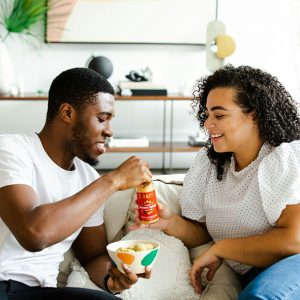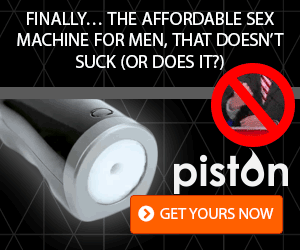We all experience barriers to sexual expression, things that get in our way or prevent us from having the sex we want, or from expressing our sexual beliefs, desires and opinions. But the kinds of barriers that are put in our way depend a lot on how the society and community we live in identifies us. Some people are routinely and systematically excluded from sexual expression, told from the start that they don’t fit the role of the good sexual person, and that for their own good and the betterment of society they should just not be sexual at all.
If you live with a disability or identify yourself as disabled, particularly if your disability is visible to others, you probably experience significant barriers to sexual expression. Many people think that these barriers are individual and internal. That, somehow, having the label of disability or having a body that doesn’t move the way other bodies move means that you aren’t sexual or even human.
The truth is that everyone is capable of sexual expression; most of the barriers people experience have to do with the world around them, not with their bodies or minds.
People with disabilities can, and do, figure out ways to express themselves sexually despite the barriers put in their way. But for some people the barriers are so pervasive and have been there for so long, that they stop even noticing them. It’s like an annoying high pitched noise, vibration or bad smell that drives you to distraction, until you get used to it and all of the sudden it recedes in the background and you forget it’s there.
When this happens with barriers people can begin to think that the barriers are all self-imposed. And that’s a particularly difficult trap to get out of.
One thing that can be helpful in starting to make a personal change is to identify and name these barriers. Everyone will have a different way of describing them. Below are some of the common barriers to sexual expression that people with disabilities deal with on a daily basis.
Sex Education And Information
Practically all sex education excludes people with lived experience of disability and ignores the existence of disabled bodies. Instead, the picture we get from sex education is just slightly more diverse than what we get from the mainstream media. The same is true for sex information and entertainment that deliver a narrow vision of sexual desirability and healthy sexuality. We might not need sex education and information to express ourselves sexually, but they can give us tools to more fully explore our sexual options and better understand our sexual potential.
Finding Sexual Partners
Maybe the most significant barrier to having good sex with other people is where and how to find those other people, particularly if you live with a visible disability or if you move through the world in a way that others mark as different. In every community there are clear and strict norms about who is beautiful and who is desirable as a partner, and people with disabilities are usually excluded. It’s been said many different ways, but the bottom line is that the problem of access is not so much how you have sex but with whom you have it.
Sexual And Sexy Role Models
When you look at the way disability is represented in popular culture, you find only a few options. On the one hand being disabled is a prison-like existence that should be pitied, a fate practically worse than death. And on the other hand being disabled is heroic; disabled people are brave simply for getting up in the morning. Neither representation is real and neither is particularly sexy. If you never see (or read or hear) examples of someone you identify with being a powerful sexual being, it is harder to imagine it for yourself. And it’s harder to know where to start defining and describing yourself as sexual and sexy.
Ableism And Internalized Ableism
Ableism (the physical and social ways that society and individuals marginalize, discriminate against and exclude people with disabilities) may represent the greatest barrier to sexual expression. Ableism contributes to the creation of a physical environment that is inaccessible, and it also leads to fewer opportunities and even possibilities for sexual expression. It isn’t just non-disabled people who participate in ableism. People with disabilities, who after all live in the same world as non-disabled people, can and often do internalize ableist beliefs. They can come to believe that they are not sexual and that sexual expression is beyond their capacity. This is what is called internalized ableism.
Homophobia
Ableism connects to other forms of oppression, which can further limit disabled people’s sexual expression. So, for example, homophobia, which describes the fear, hatred and prejudice of people who identify as gay, lesbian or bisexual, intersects with ableism to create extra barriers for disabled people. How this works is complicated, and while homophobia can be obvious, as in the case of violence being perpetrated against gay disabled people, it can also be very subtle. The result is that if you live with a disability and identify as something other than heterosexual, your sexual expression becomes more heavily restricted, regulated and outright denied by the world and people around you.
Transphobia
Just as there is an assumption that if you are disabled and sexual you will be heterosexual, there are a series of assumptions about disability and gender identity. The underlying assumption is that disabled people will always fit neatly into one of two categories – male or female. But just as many non-disabled people who identify as transgender or transsexual find that those two options don’t describe their experience of gender, people with disabilities may identify as trans. Transphobia refers to the fear and hatred of people who are trans, as well as the prejudice against trans people that is pervasive in most communities and cultures. Transphobia is a significant barrier to people with disabilities expressing their gender identity, which is a part of overall sexual expression.
Physical And Mobility Barriers To Sexual Expression
Physical barriers to sexual expression would include things like not being able to find clothes that express your sexuality as you’d like or not being able to physically get into spaces where public or private sexual expression is encouraged and allowed. Mobility barriers to sexual expression are the things that most people think of – things like not being able to touch or stimulate yourself or a partner, not being able to get into certain sexual positions, etc. These may be the most commonly described barriers, but interestingly, they can be some of the most straightforward to address.
Violence
Far too many people experience violence, including sexual violence, at some point in their lives. Statistics vary but often the numbers are in the one-in-four range. Research and experience tell us that people with disabilities are much more likely to experience violence, including sexual violence, at some point in their lives when compared to non-disabled people. The impact of violence on one’s sexuality is far reaching. It influences how you feel about your body, how, where and with whom you are able to feel safe, your beliefs about your own desirability and, fundamentally, how you feel about any sexual interactions at all. Unfortunately most work on sexual violence excludes people with disabilities. It also leaves out discussion of healthy sexuality. The truth is that people who have experienced sexual violence can, and do, find ways to express their sexuality in pleasurable and positive ways. It isn’t easy. One of the things we can all do to support that work is to stop ignoring or being silent about violence in our own communities.












